Spicy Dried Radish Salad (Mumallaengi Muchim) is a classic Korean side dish that’s easy to make once you have the dried radish. The wonderful chewy and crunchy texture makes it extra tasty. Includes a guide on how to dry your own radish strips at home.
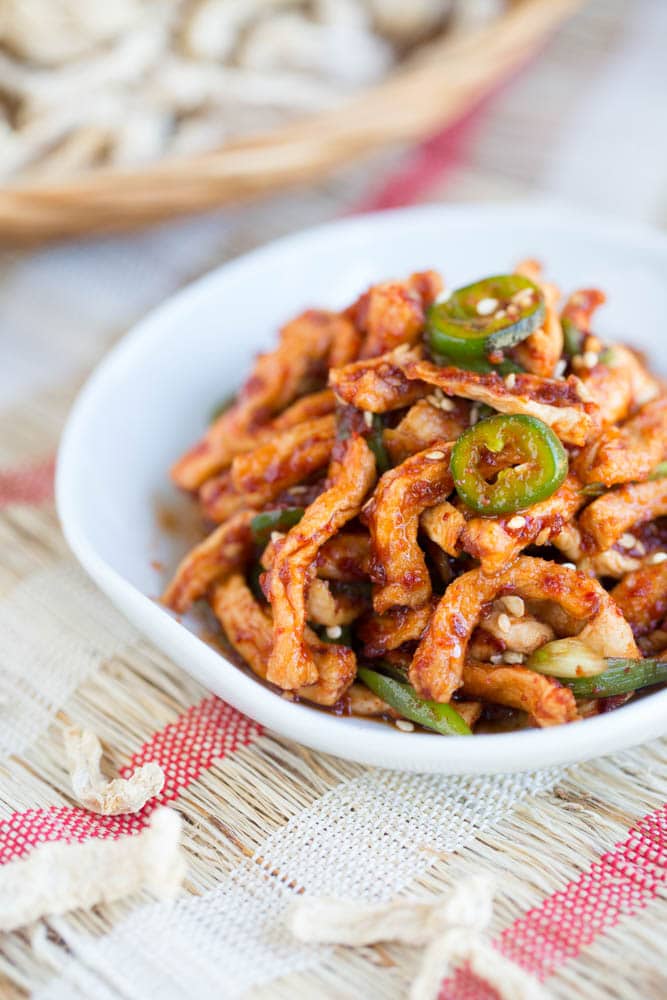
What is Mumallaengi Muchim?
Mumallaengi Muchim (무말랭이 무침) is a classic spicy side dish (muchim) made from dried radish strips called Mumallaengi. Koreans love to have this as an everyday side dish and also in lunch boxes. Although people enjoy this dish all year round, the dried radish strips are usually made after Kimjang in the fall.
Fall is the time when there’s an abundance of radish harvest in Korea which are mostly used for Kimjang. But after Kimjang, leftover radishes were often dried and stored for later (otherwise they will freeze in water).
Sonmat 손맛 IN Korean Cooking
While making this Spicy Dried Radish Salad, I was reminded of something called Sonmat 손맛 that Koreans love to talk about when someone makes delicious food. Sonmat literally means ‘hand + taste’ or maybe we could say one has tasty hands?! 😂🤣 It refers to certain people who may make the same dish, using the same recipe but always their result comes out more tasty.
So the way it comes across when you hear that is – certain people must have magical hands that make everything taste good whenever they make it. Well.. honestly, I don’t think anyone’s hands can have special powers where perhaps some MSG like substance comes out of their hands as they cook?? 😂🤣
But I wonder (and this is purely my theory) if perhaps it has something to do with the minor details that some people may miss when they cook. Korean cooking (and I guess any cuisine) is all about the little differences – how well you add the layers of flavor, how well you season each ingredient and especially, it’s all about how well you mix (or massage) the seasonings and the ingredients with your hand.
Case in point, in this recipe, you may just want to soak the radish in water instead of water + soy sauce. You may be thinking – Hey, what’s the big difference, if I just add soy sauce later?
Believe me, I tried it both ways. You know me, I always try different ways to simplify the dish without losing flavor. And I found that the radish just did not fully soak up the flavor when I soaked in water only.
And be sure to massage everything well when making this Mumallaengi Muchim so that your hand seasonings are massaged into the radish. 😝
Who doesn’t love a massage?? 😍
TIP FROM JINJOO!
Chef’s Tips for Mumallaengi Muchim
- Adjust soaking time to your liking – try 40 min. to 1 hr. If it’s still too chewy, soak longer but it will not get much softer after a certain point. Note, it will always be a little chewy which is why it’s so good.
- Adjust spicy level – this dish is originally quite spicy and red, usually loaded with gochukaru but you can adjust. I tried it with 1/2 the amount and it was still really good.
- Syrup substitutes – I like to use 100% maple syrup but you can use corn syrup (물엿), Oligosaccharide syrup (올리고당) or other syrups like Agave as long as it can be soaked up by the dried radish. I would not use honey though – it’s too thick.
- Let the seasoning soak for a few minutes – it gets better over time.
- Don’t you add chili pepper leaves? – Yes, commonly, dried chili pepper leaves (Gochu-ip 고추잎) are rehydrated then added but I omitted in this recipe because they are not easy to get. So instead I added green onions.
- Variations – add rice vinegar (1 tsp) for a more tangy and fresh taste. Make it more like kimchi by adding Guk Ganjang (Korean Soup Soy Sauce) and fish sauce.
- How to store/How long will it keep? – Store mumallaengi muchim in your refrigerator and it will keep at least a week or more. As this is made with dried radish, it will keep well at room temp for a day (so good in lunch boxes)
Where can I get the Dried Radish?
Most Korean grocery stores sell Mumallaengi in packages or you can also buy it from my Amazon store HERE. If you cannot find it or if you would rather make your own, just follow the instructions in my recent post — How to dry radishes to make Mumalleangi. It’s actually really easy to make your own at home – you just need 3-7 sunny days or a dehydrator.
Here’s a close up of my home-dried radish that I’ll be using for my Spicy Dried Radish Salad. If buying packages, try to buy ones that look more white. If it’s yellow or brown, it’s probably old.
Step-by-Step Instructions
Servings: 2 Cook Time: 1 hr 5 min Difficulty: EASY
- In a bowl, add water and soy sauce (Jin Ganjang). For 1/2 cup (30g) dried radish strips, I add 1 Tbs soy sauce to 1/2 cup water. Radish should be fully soaked in soy sauce water.
- Soak for 30- 40 minutes until soft but slightly chewy. Soak longer if you think it’s too hard but note, it will always be a little chewy.
- While radish is soaking, cut 1/2 green onion into long diagonal cuts, chop garlic (1 tsp) and optionally slice thinly 1 green chili pepper (use your favorite chili, I used Jalapeno from the garden). Cut chili pepper into 1/2 if you don’t want a whole piece in your mouth.
- When radish strips are fully soaked, drain and discard the water.
- Add 1/2 tsp vegetable oil to frying pan and briefly saute the radish (about 1 min) on medium heat. We don’t want to brown it but just cook it long enough to remove the raw peppery taste.
- Put the sauteed radish back in the bowl and add 1 Tbs Maple syrup. Mix and massage the radish with your hands so the syrup gets evenly soaked up. Use plastic gloves if you don’t want to get your hand sticky.
- Add 2 tsp to 1 Tbs Korean red chili powder (Gochukaru). Add 1 1/2 tsp soy sauce (Jin Ganjang) OR 1 tsp soy sauce + 1/4 tsp Guk Ganjang (soup soy sauce) and 2 tsp to 1 Tbs water.
- Mix everything well – massaging with your hands so all the lovely seasoning is absorbed. Lastly, add 1 tsp chopped garlic, green onions and chili peppers. Mix again. Let it sit for a few minutes before serving.
- When serving, sprinkle some toasted sesame seeds and a swirl of sesame oil (optional). Enjoy!!
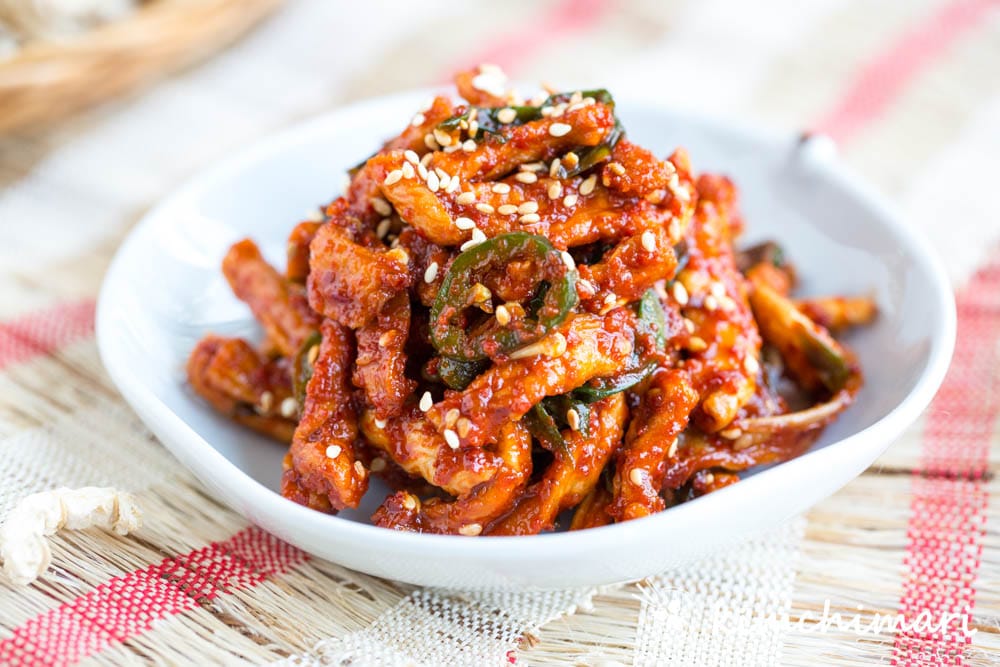
Serving Suggestions
- Serve as a side dish to any meal or in lunchboxes
- A great substitute for Kimchi – especially if you add a splash of rice vinegar. Or add fish sauce to give it more of a Geotjeori kimchi flavor.
- Make Tea – roasted dried mumallaengi can be made into a tea that’s said to be good for your knees, high in calcium, great for digestion, and helps to remove toxins from your body.
- Make Bossam – instead of using fresh radish to make the spicy radish muchim in Bossam, try using the dried mumallaengi. It has more texture than regular fresh radish.
How to make Mumallaengi Muchim video!
Mumallaengi Muchim (Spicy Dried Radish Salad)
Ingredients
- 1/2 cup dried radish strips (mumalleangi) 1/2 cup = 30g
- 1/2 cup water
- 1 Tbsp soy sauce jin ganjang (kikkoman, sempio)
seasoning
- 1 Tbsp maple syrup or Oligosaccharide Syrup or Corn syrup
- 1 Tbsp Korean red chili powder (Gochukaru)
- 1 tsp garlic chopped
- 1 1/2 tsp soy sauce jin ganjang (kikkoman or sempio)
- 2 tsp water
- 1 each green onion
- 1 each green chili pepper Korean pepper or Jalapeno
- 1/4 tsp sesame seeds
- 1/4 tsp sesame oil (optional)
Instructions
- In a bowl, add water and soy sauce (Jin Ganjang) and soak dried radish in the soy sauce water. For 1/2 cup (30g) dried radish strips, I add 1 Tbs soy sauce to 1/2 cup water. Radish should be fully soaked in soy sauce water. Let it soak for 30-40 minutes until soft but slightly chewy. Soak longer if you think it's too hard but note, it will always be a little chewy.
- While radish is soaking, cut 1/2 green onion into long diagonal cuts, chop garlic (1tsp) and optionally slice thinly 1 green chili pepper (use your favorite chili, I used Jalapeno from the garden).
- When radish strips are fully soaked, drain and discard the water.
- Heat 1/2 tsp vegetable oil in a small frying pan on medium heat, sautee the drained radish for 1 minute or so. We don't want to brown the radish just cook it enough to remove the raw peppery taste from the radish. Remove from heat and let it cool in a bowl.
- To the sauteed radish in the bowl and add Maple syrup. Mix with your hands. Put plastic gloves on if you don't want to get your hand sticky.
- Add Seasonings – Korean red chili powder (Gochukaru). soy sauce (jin ganjang), 1 tsp chopped garlic, 2 tsp to 1 Tbs water. For a more deeper flavor, add 1 tsp Jin Ganjang and 1/4 tsp Guk Ganjang (Korena Soup Soy Sauce) instead of 1 1/2 tsp of soy sauce.
- Mix everything well – massaging with your hands. Add green onions and chili peppers. Mix again.
- When serving, sprinkle some toasted sesame seeds and a swirl of sesame oil (optional).
Tips & Notes:
- Note, the sodium level is just an estimate as most of the soy sauce in water used in rehydrating radish is discarded so I reduced the amount of soy sauce to 2 tsp total but it’s hard to say exactly what it is.
- Adjust red chili powder (Gochukaru) to your taste. I tried 1/2 the amount and it’s still good!
- Adjust soaking time to your liking – 30 min to an hour.
- Syrup substitutes – I like to use 100% maple syrup but you can use corn syrup (물엿), Oligosaccharide syrup (올리고당) or other syrups like Agave as long as it can be soaked up by the dried radish. I would not use honey though – it’s too thick.
- Let the seasoning soak for a few minutes – it gets better over time
- Don’t you add chili pepper leaves? – Yes, commonly, dried chili pepper leaves (Gochu-ip 고추잎) are rehydrated then added but I omitted in this recipe because they are not easy to get. So instead I added green onions.
- How to store/How long will it keep? – Store mumallaengi muchim in your refrigerator and it will keep at least a week or more. As this is made with dried radish, it will keep well at room temp for a day (so good in lunch boxes)
- Variation – add 1 tsp vinegar for more of a refreshing taste!

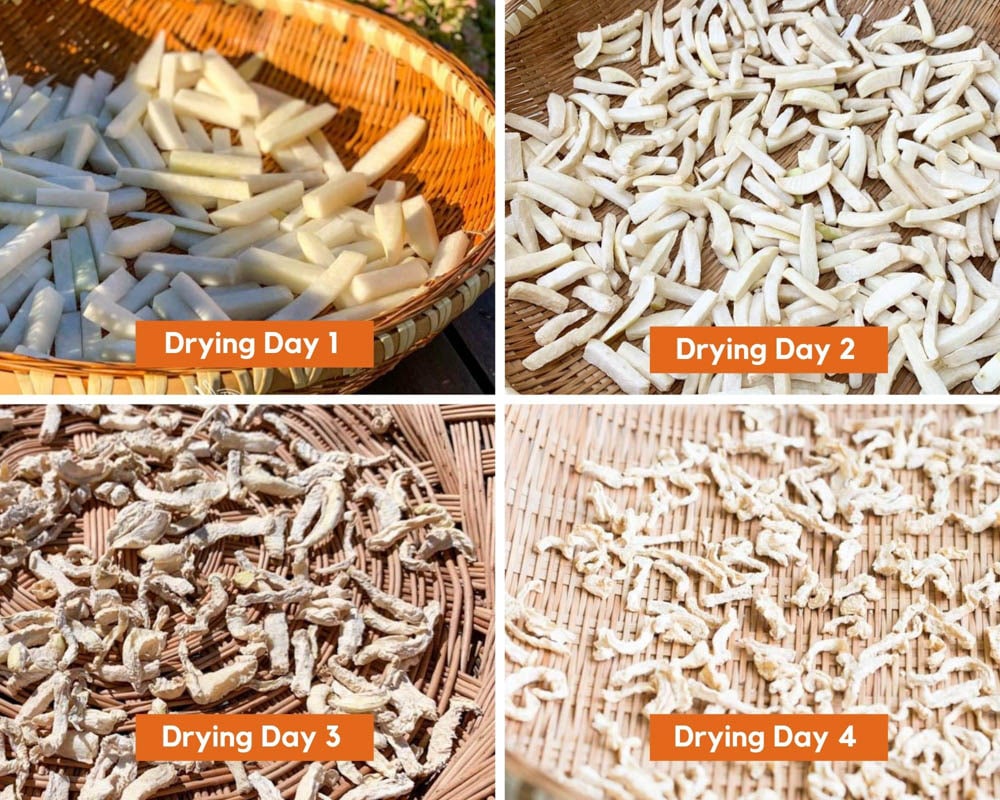

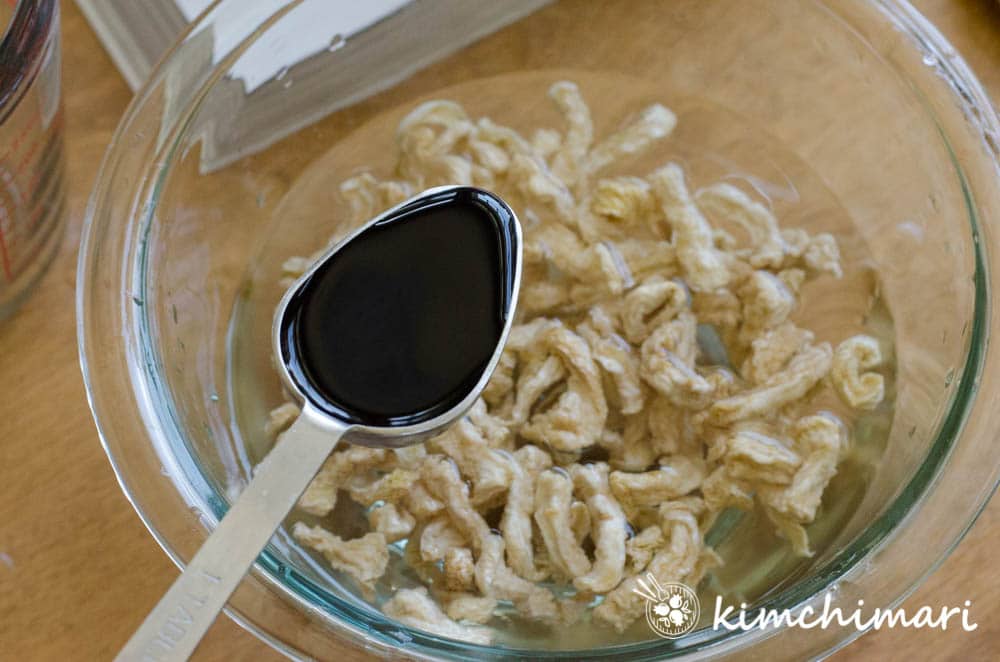
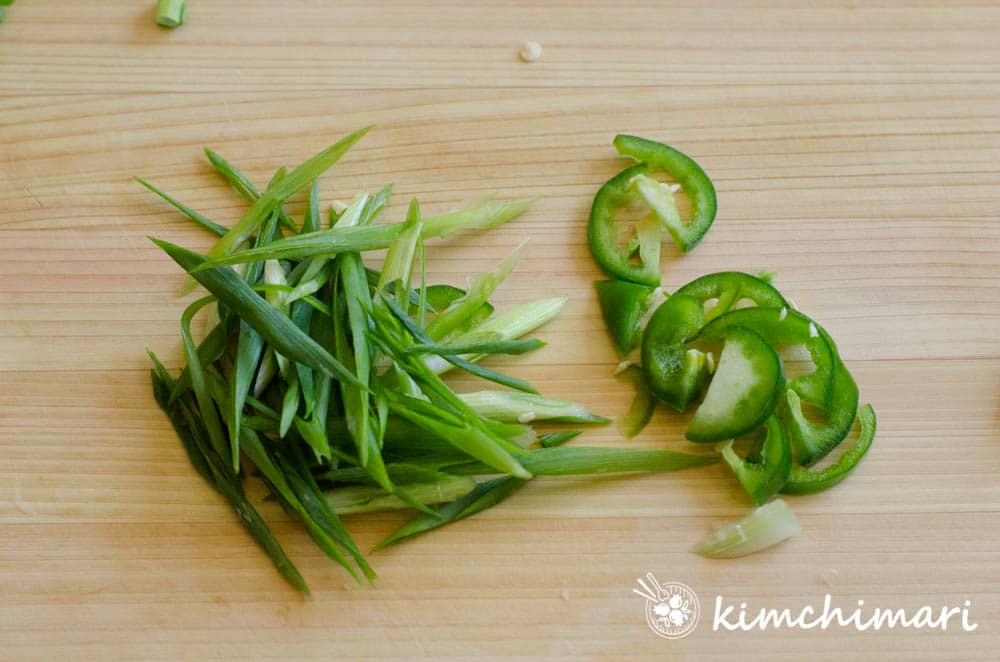
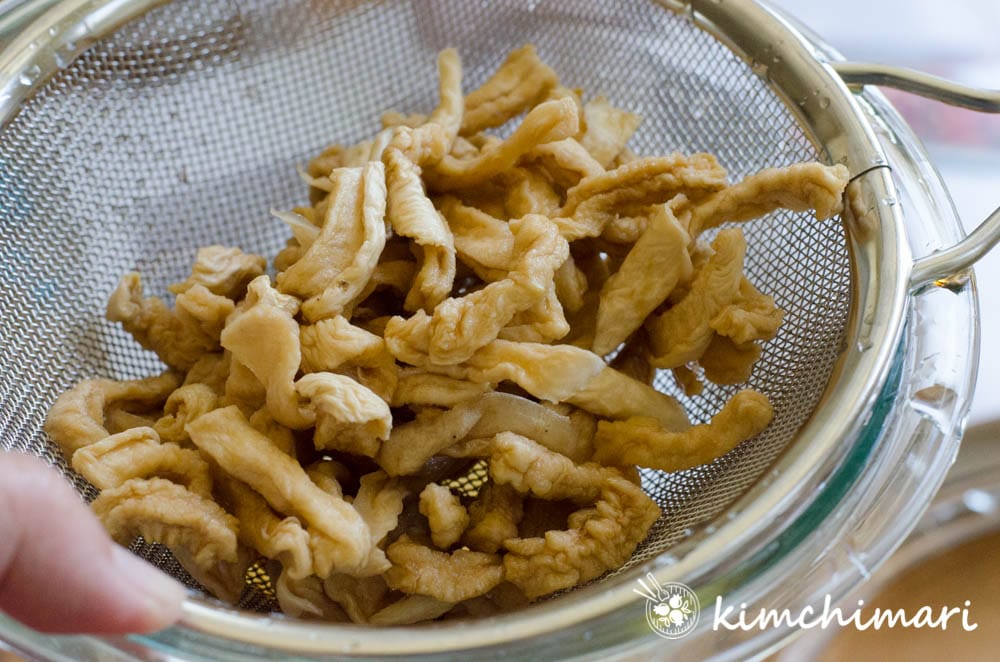
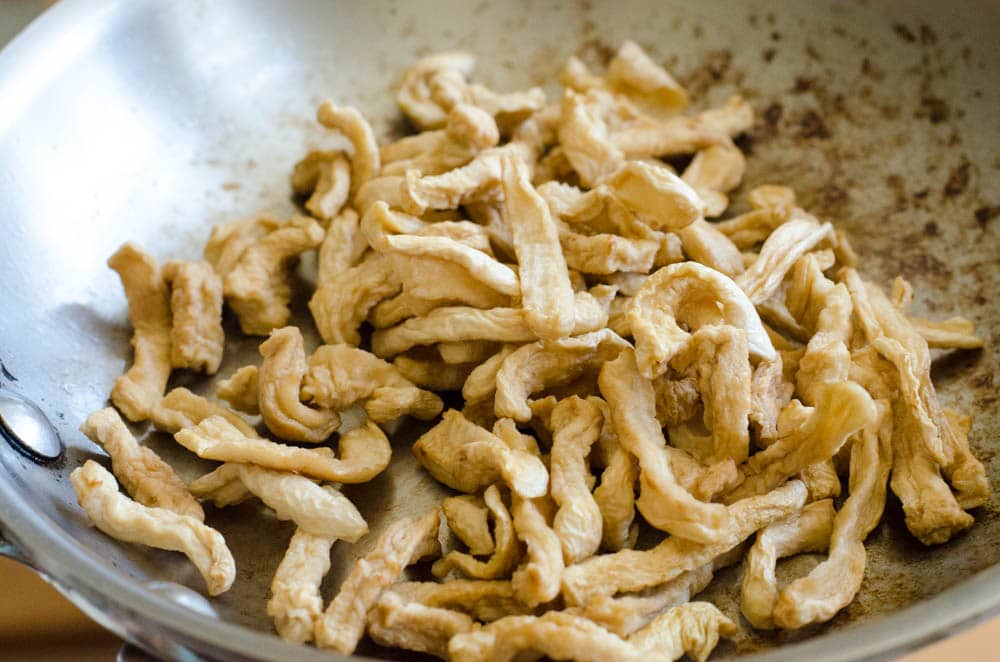
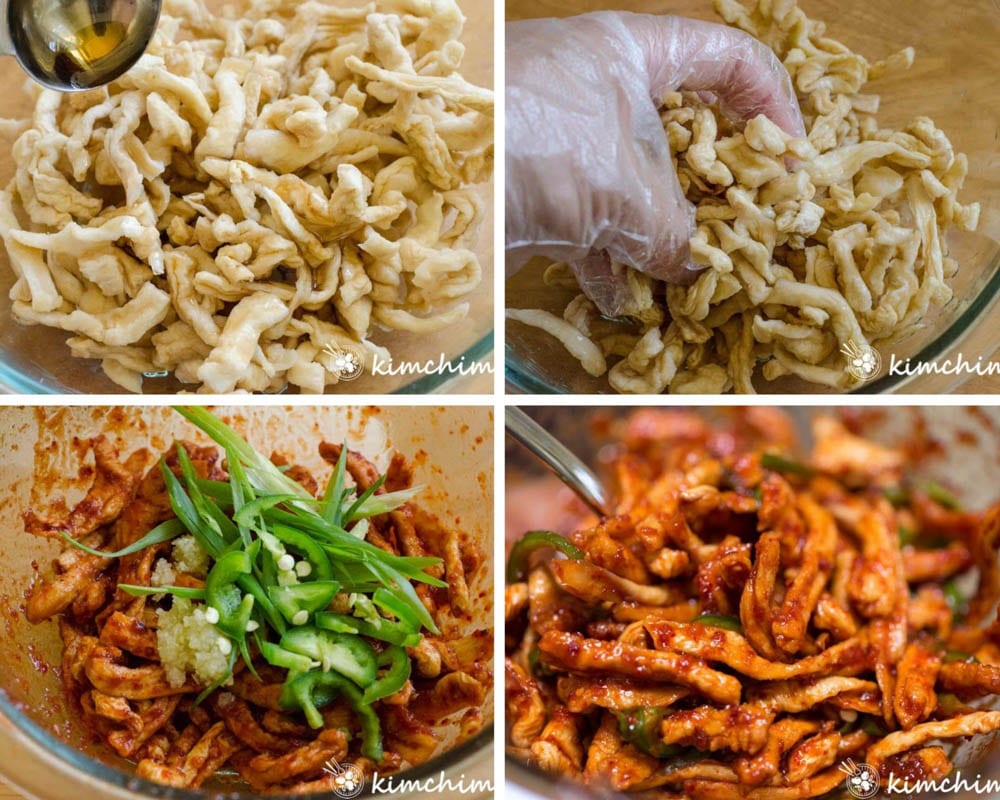
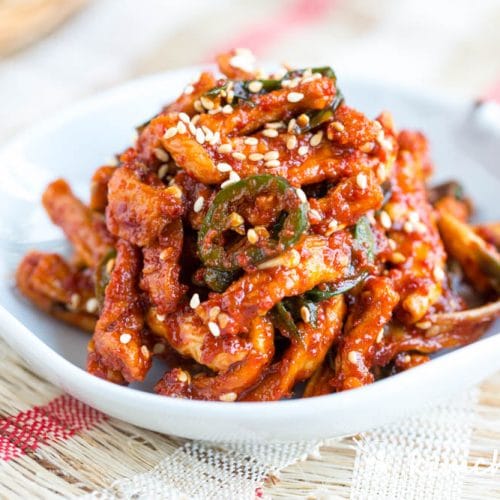
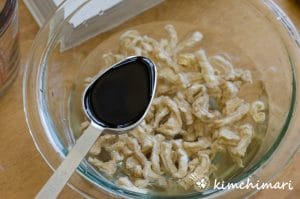
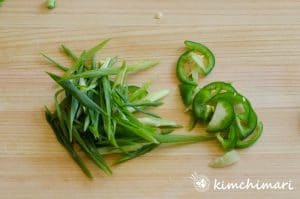
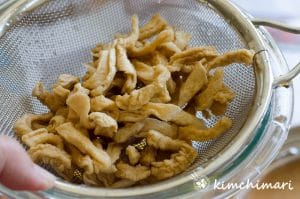
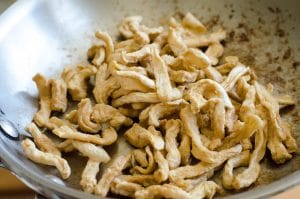
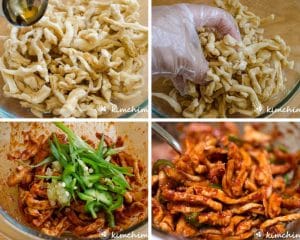
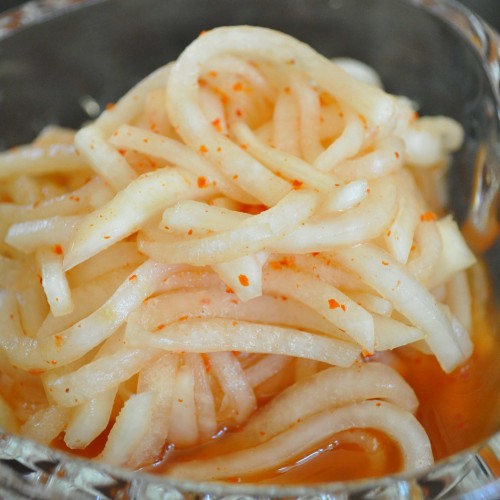
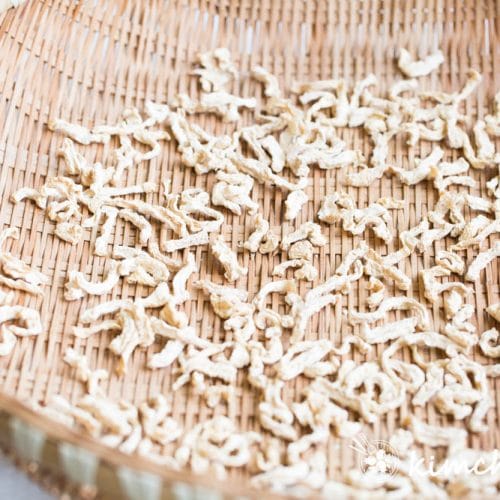
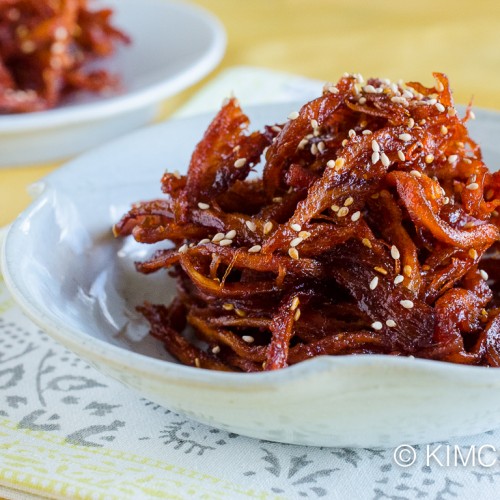
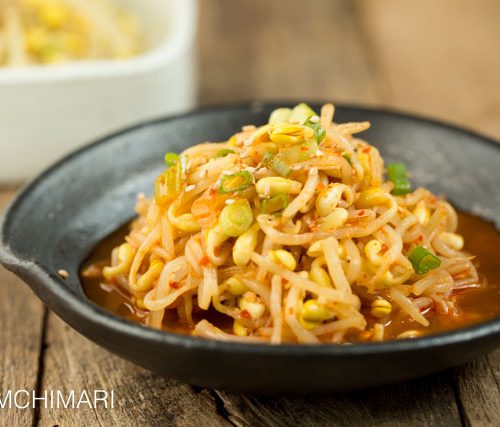
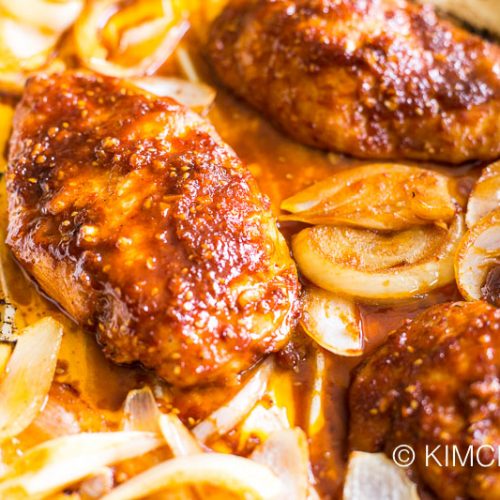
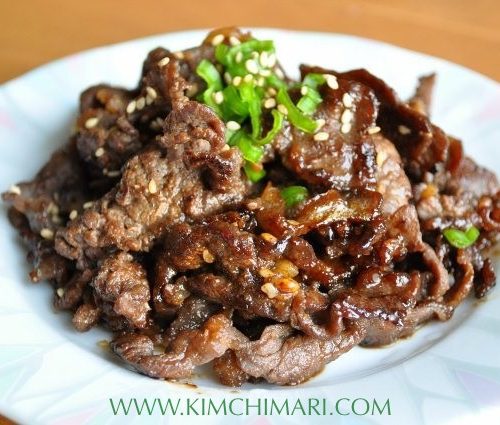
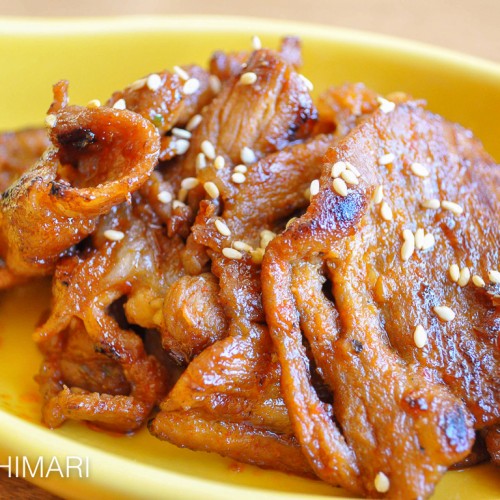
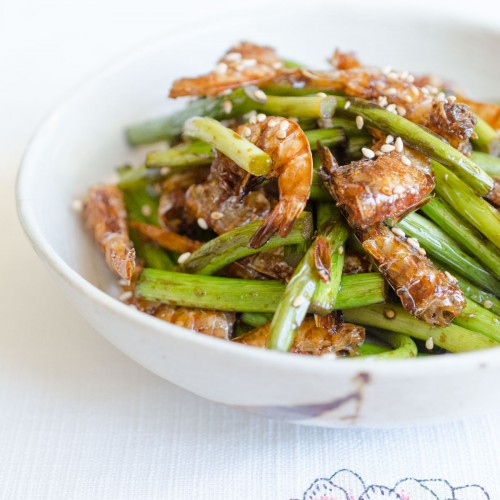
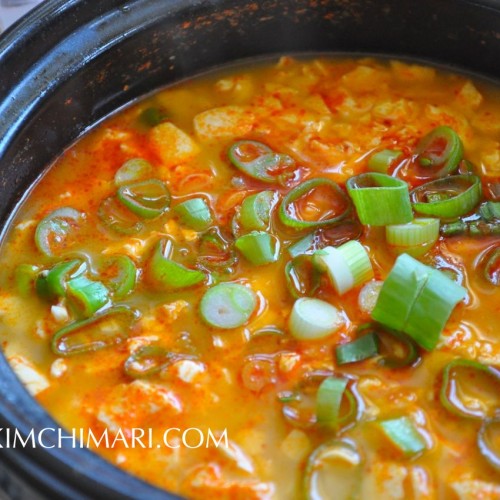
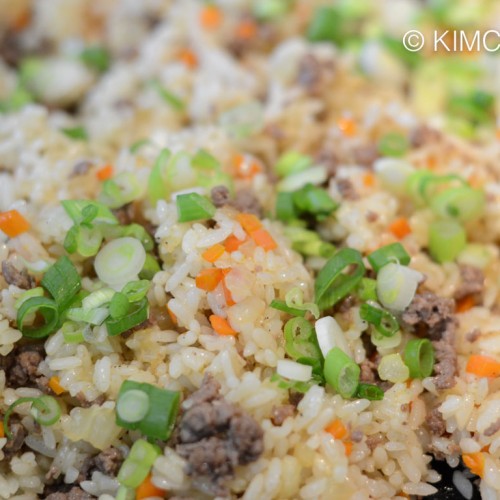
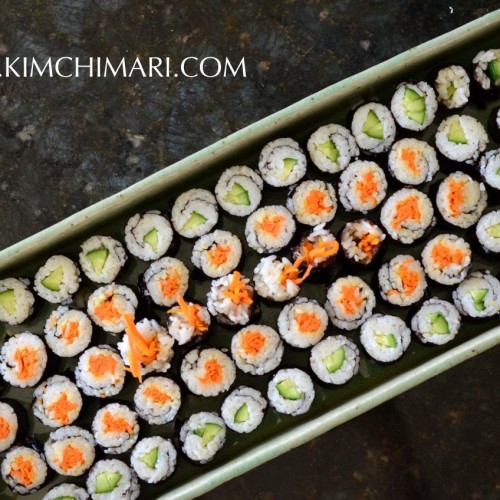
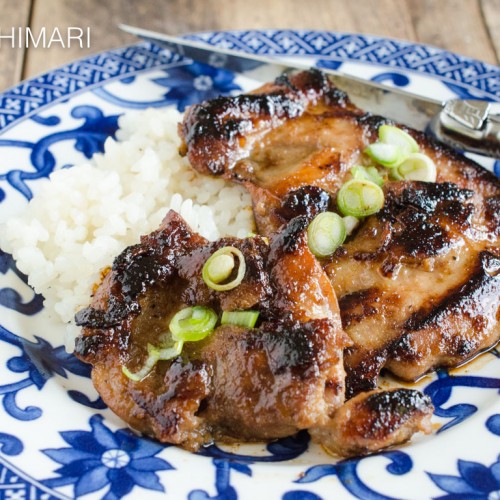
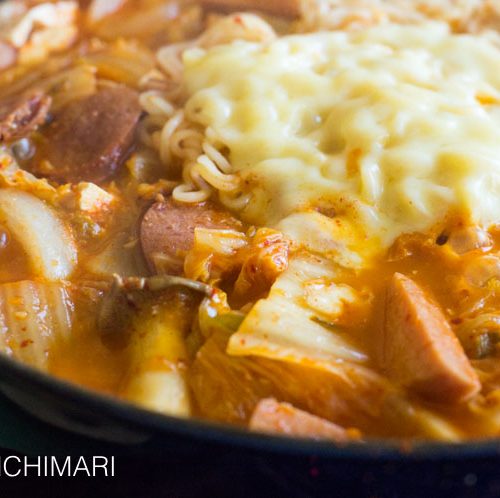
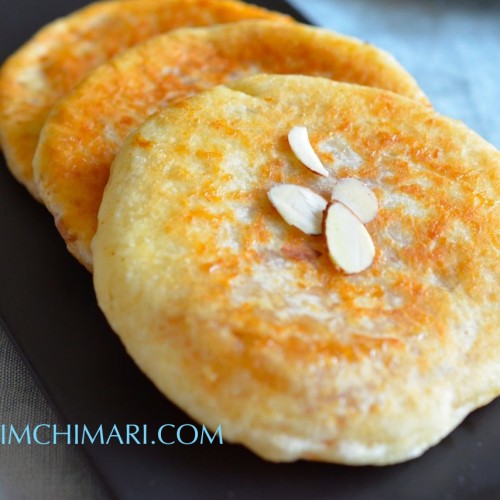






Thank you, we just made this today. Your instructions were very easy to follow!
Wonderful to hear that! Thank you for your feedback.
I dried my own radishes and just didn’t know what recipe to make with all my hard work. So glad I tried your recipe, it came out so delicious and authentic. The maple syrup helped because I don’t have Korean syrup and it was the only thing I was missing. Thank you!
Hi Terri, I’m so glad you found my recipe and you enjoyed it! Thank you soo much for your 5 stars and comments!
I am going to try this from scratch! When drying your own radish at home, is it still necessary to soak in soy sauce/water mixture?
Awesome! Yes, you still need to soak as they will be totally dried. Good luck!
This turned out delish! I was septical about adding the water but the gochukaru red pepper powder absorbed a ot of the liuid and made a nice thick sauce. Than you for this recipe!
Hi Jessica,
Yes, I originally made it without water but found that adding the water makes it a little more soft and better tasting overall. So glad you enjoyed it! Thank you!
Of course there’d be a word for something so difficult to describe, sonmat! I’ve often wondered about this myself. I wonder if the ph balance of someone’s skin has an effect. My friend was helping me roll meatballs and his hands were practically clean between rolling but mine were a sticky mess, I had to scrape the mixture off with a dull edge of a knife to get clean.
Thank you so much for posting this. I’m gearing up to plant some radish (Daikon specifically) next month and am really hoping to try this.
Haha.. I know, isn’t it fascinating?! It may also have to do with body temperatures or how some people’s hands are warmer than others, etc. Anyway, hope you like it and with Daikon, remember, you tend to get black spots easily as it dries – so dehydrator will probably work best. Thank you so much!